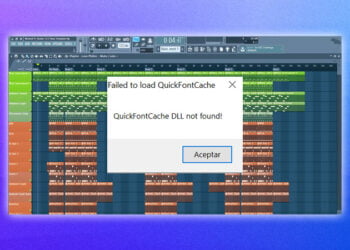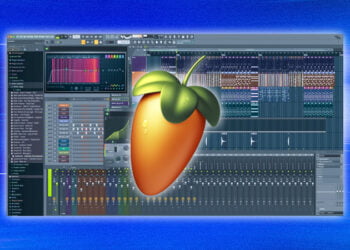Producing music and audio content on a digital platform like FL Studio is a great way to bring your creative ideas to life.
In this post, we’ll provide an overview of how to export your project in FL Studio.
Exporting is the final step in the music production process and can be a crucial one.
It ensures your project is ready to be shared with the world and is the bridge that connects your work in the studio to the listener.
Whether you’re new to FL Studio, or are a seasoned veteran, this post will help you understand the basics of how to export your project correctly and efficiently.
Regardless of your skill level, learning the fundamentals of exporting your project in FL Studio is a key step in the production process.
We’ll walk you through all the details you need to know and provide tips and tricks to help improve your workflow.
Let’s get started!
Save the project in the FL Studio file format
Saving a project in the FL Studio file format is the most convenient way to back up and work on a project in FL Studio.
To do this, go to File > Save As and select the “FL Studio Project” from the Format drop-down menu.
This will ensure that all of the project’s data is saved in a single file that can be reopened anytime in FL Studio.
Additionally, the entire project folder will be zipped into a single file for easy transport.
This file format ensures that all data is preserved, so you can open the project at a later date and continue working on it.
Choose a destination folder to export the project
Once you have finished all the necessary steps to export your project from FL Studio, it’s time to select a destination folder for your exported file.
To do this, click on the “Browse” button next to the “Destination Folder” field, and then select a folder in which to store your exported project.
Ensure that this folder is easily accessible, as you will need to locate the file after exporting it.
Once you have selected the folder, click “Ok” and you will see it reflected in the “Destination Folder” field.
Select the appropriate export settings
Exporting in FL Studio is a simple and straightforward process.
The first step is selecting the appropriate export settings.
To do this, open your project in FL Studio and click on File > Export > Project.
In the window that appears, you will see a list of export settings.
You can select the desired format and sample rate, as well as the bit depth and output location.
You can also choose whether to include or exclude any instruments or effects from the export.
Once you’ve made your selections, click on the “Export” button to start the export process.
Adjust the audio master settings
Now, it’s time to adjust the audio master settings.
This step is crucial in making sure the audio you’re producing is at its best.
To adjust the audio master settings, go to the Mixer window and click on the “Output” tab.
From here, you can change the settings to your liking.
Make sure you adjust the gain, stereo separation, and stereo width settings.
After you’re done, click “OK.”
Bounce the audio to Wav or MP3 file format
Exporting your project on FL Studio is an important step in the producing process, and one that can be done relatively easily.
The fifth step in the process is to bounce the audio to a WAV or MP3 file format.
To do this, simply go to File > Export > Audio, and choose either Wave or MP3 from the dropdown menu.
Additionally, make sure to adjust the bit rate and sample rate, as well as the output type and volume level.
Once you’ve made your changes, simply hit “Ok” and your project will be saved to the chosen file format.
Adjust the sample rate, bit depth and number of channels
Before you can export your project, you need to adjust the sample rate, bit depth, and number of channels.
The sample rate determines the quality of the audio and can be set anywhere from 8,000 Hz to 192,000 Hz.
The bit depth determines the dynamic range and can be set between 8-bit and 24-bit.
The number of channels can be adjusted from mono (1 channel) to 5.
1 surround sound (6 channels).
Make sure to select the sample rate, bit depth, and number of channels that best suit the project you’re working on.
Export the MIDI data
Exporting the MIDI data from your project in FL Studio is easy.
To do so, simply go to File > Export > MIDI File.
Here, you can choose where to save the exported file, modify the MIDI type, and set the tempo.
Additionally, you can choose to export the entire song or just a specific project, such as a single pattern.
Once you’re done, click the “Export” button and your MIDI data will be exported to the location of your choice.
Export the audio files to a separate folder
After you have finished creating your project in FL Studio, you will need to export the audio files to a separate folder.
To do this, open the project and click the ‘File’ menu located at the top of the window.
From the menu, select ‘Export’ and choose the option ‘Project as Audio Files’.
This will open a new window where you can specify the destination folder and the format of the output audio files.
When you have selected the destination folder, click ‘OK’ and the audio files will be exported to the folder.
Conclusion
In conclusion, exporting a project in FL Studio is a surprisingly simple process.
Just remember to save your project, export the audio files, and render the project in the desired format.
As long as you follow these steps, you can be sure that your project will be in the format you need and you can share it with the world.
With this knowledge, you can now confidently complete your FL Studio projects and get them out into the world to share with others.
























